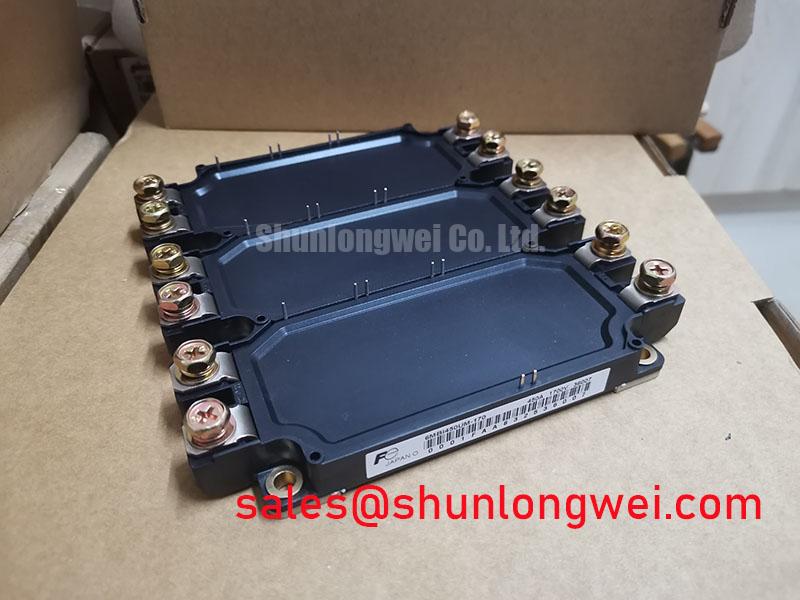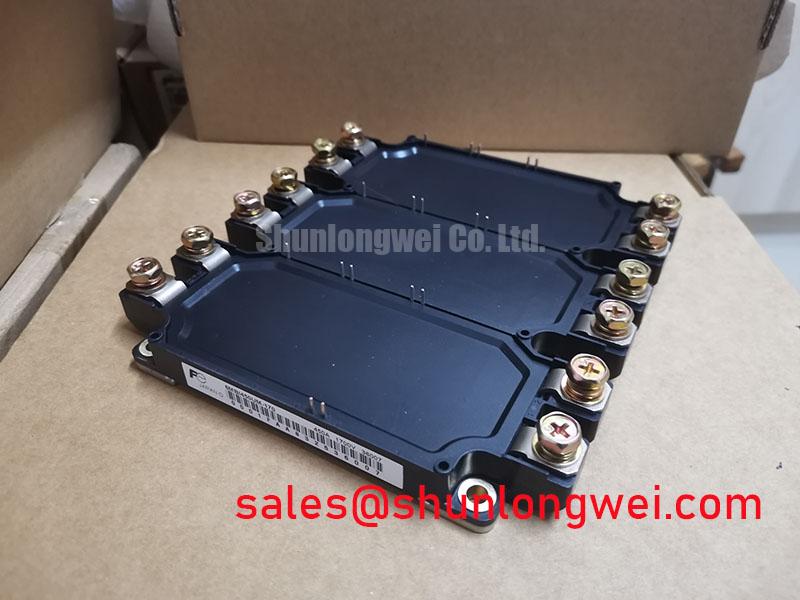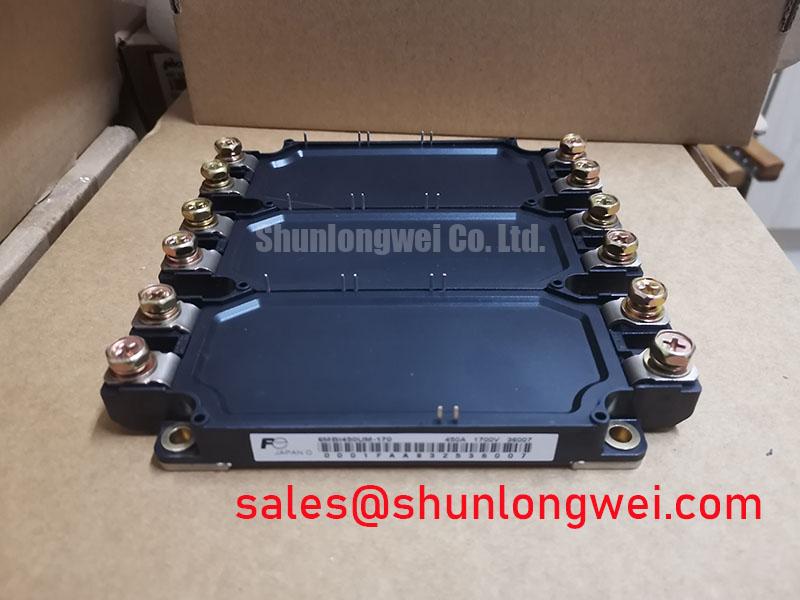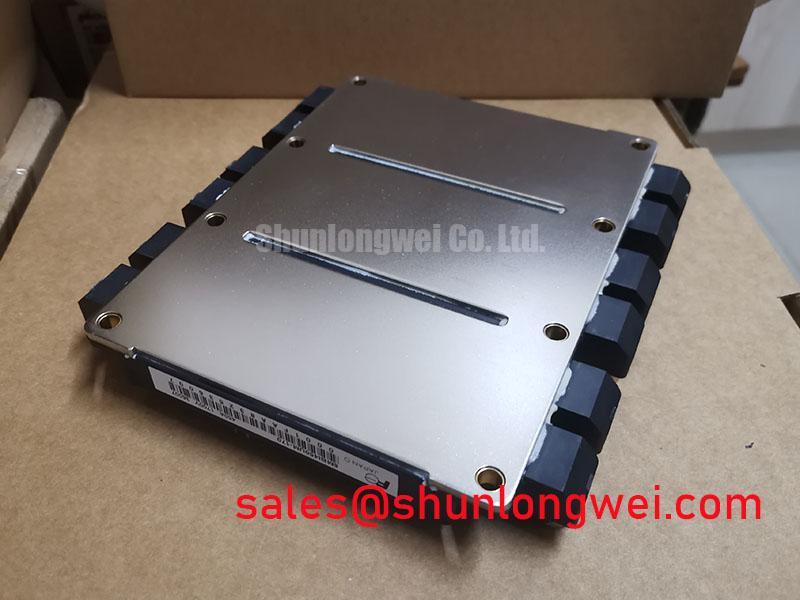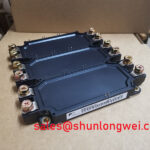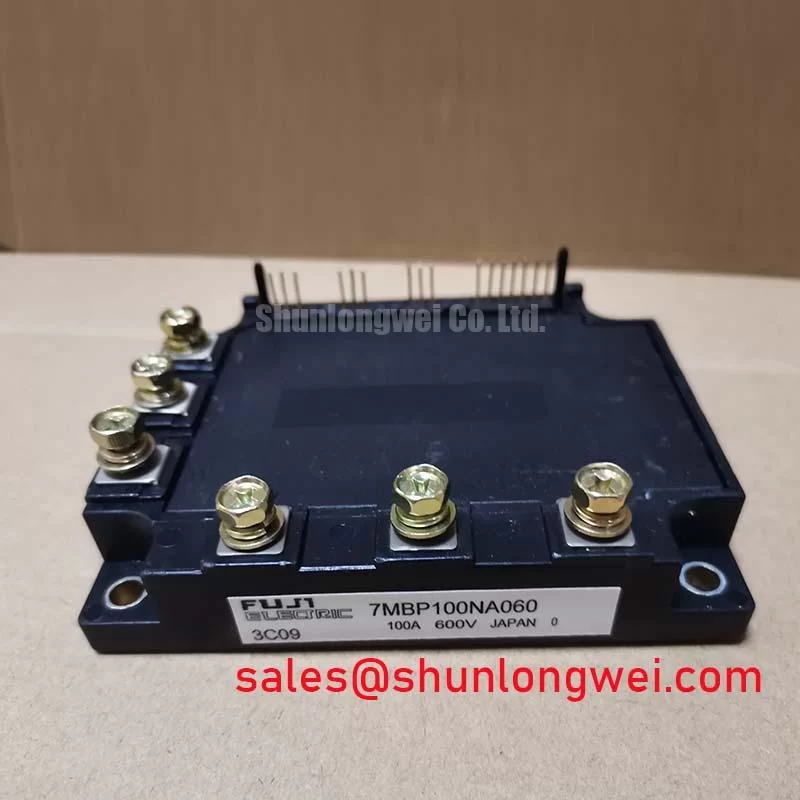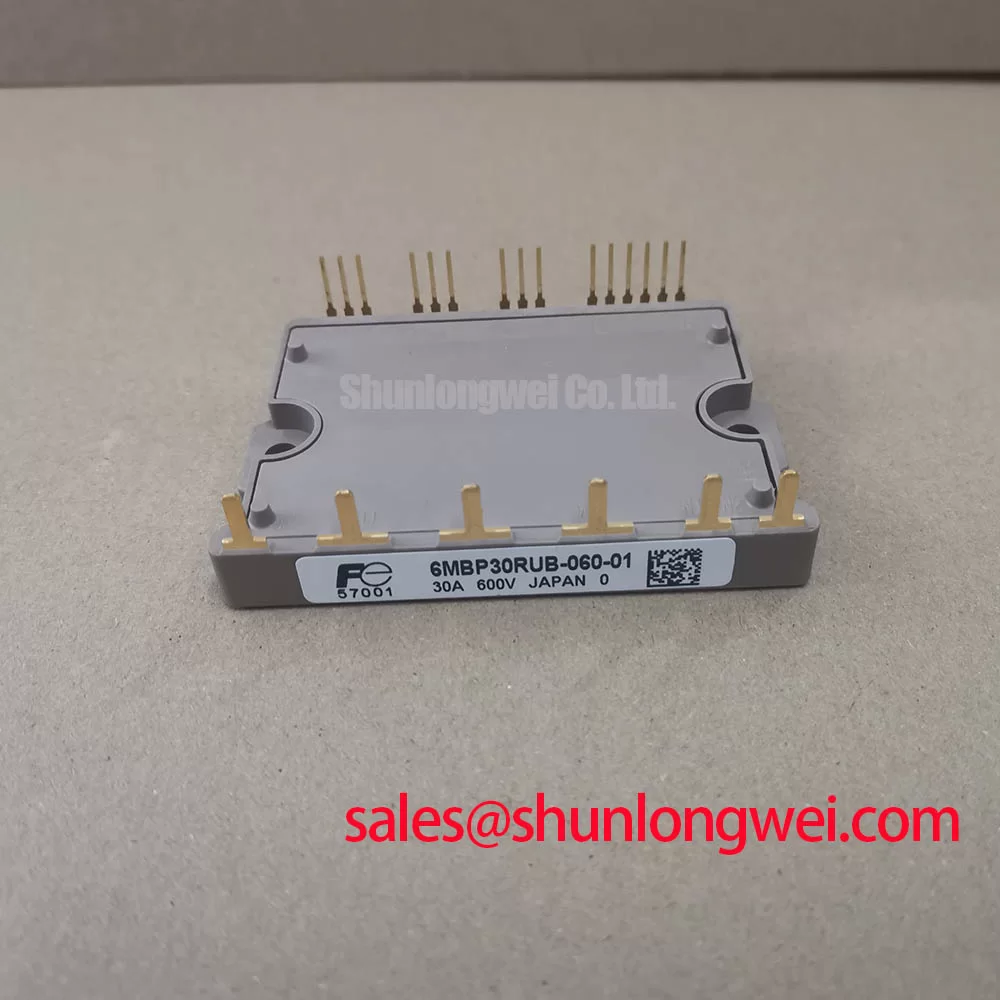Content last revised on November 15, 2025
6MBI450UM-170 IGBT Module: Fuji U-Series Technical Review
An Engineering-Focused Overview of the Fuji Electric 6MBI450UM-170 6-Pack IGBT Module
The Fuji Electric 6MBI450UM-170 is a 1700V, 450A six-pack IGBT module engineered for superior switching efficiency in high-power conversion systems. Its U-series chip technology delivers a competitive balance between conduction and switching losses, enabling higher frequency operation and improved thermal performance. How does its low VCE(sat) of 2.20V benefit inverter design? It directly reduces static power dissipation, which lessens heatsink requirements and improves overall system energy efficiency, a critical factor for industrial drives and power supplies.
- Core Specifications: 1700V | 450A | VCE(sat) 2.20V (typ)
- Key Benefits: Minimized total switching loss; optimized for high-speed operation.
Technical Deep Dive
Analyzing the U-Series IGBT for Minimized Switching Losses
The performance of the 6MBI450UM-170 is rooted in Fuji Electric's U-series IGBT technology, which is specifically developed to reduce total power loss in demanding applications. A detailed examination reveals a carefully optimized balance between conduction and switching characteristics. The typical collector-emitter saturation voltage (VCE(sat)) is held to 2.20V at its nominal current and an operating temperature of 125°C. This figure is crucial as it dictates the level of conduction losses—the heat generated while the device is in its 'on' state. Lower VCE(sat) directly translates to less power wasted as heat, contributing to higher system efficiency.
On the dynamic side, the module's switching energies are a primary focus. With a typical turn-on energy (Eon) of 46 mJ and turn-off energy (Eoff) of 60 mJ, the device is tailored for fast transitions between states. This capability is essential for systems that operate at higher switching frequencies, such as modern Variable Frequency Drives (VFDs) and high-capacity power supplies. What is the benefit of its soft-switching characteristic? It effectively reduces voltage and current stress on the components during switching, which mitigates electromagnetic interference (EMI) and enhances the module's long-term reliability.
Key Parameter Overview
Core Specifications for Efficient Power Conversion
The following table details key parameters of the 6MBI450UM-170, providing insight into its operational capabilities. The values presented are based on the official manufacturer's datasheet, which should be consulted for comprehensive characteristic curves and application notes.
| Parameter | Value | Engineering Significance |
|---|---|---|
| Collector-Emitter Voltage (VCES) | 1700V | Provides a substantial safety margin for applications operating on 690V AC lines, ensuring robustness against voltage transients. |
| Continuous Collector Current (IC) | 450A (at Tc = 80°C) | Indicates the module's capacity for handling high continuous currents, making it suitable for high-power motor drives and inverters. |
| Collector-Emitter Saturation Voltage (VCE(sat)) | 2.20V (typ) / 2.70V (max) at 450A | A low VCE(sat) is like a wider pipe for current flow; it minimizes the voltage drop and heat generated during conduction, directly boosting the system's energy efficiency. |
| Total Switching Energy (Ets) | 125 mJ (typ) at 125°C | Represents the combined energy lost during turn-on and turn-off. A lower value enables higher switching frequencies without excessive thermal stress, allowing for more compact system designs. |
| Thermal Resistance (Rth(j-c)) | 0.063 °C/W (per IGBT) | Defines the efficiency of heat transfer from the semiconductor junction to the case. A lower thermal resistance simplifies thermal management, allowing for smaller heatsinks or higher power output under the same cooling conditions. |
| Short Circuit Withstand Time (tsc) | ≥ 10µs | This critical safety parameter ensures the module can survive a direct short-circuit event for a specified duration, allowing protection circuits to react and prevent catastrophic failure. |
Download the Datasheet for complete technical specifications.
Intra-Series Comparison & Positioning
Positioning the UM-170 within Fuji's High-Voltage Portfolio
Within the Fuji Electric IGBT portfolio, the 6MBI450UM-170 occupies a strategic position for high-power, high-voltage applications. While other series may focus on ultra-low conduction losses for low-frequency applications, the U-series, including this module, is differentiated by its emphasis on reducing switching losses for higher-frequency designs. It serves as a robust solution for designers who need to balance efficiency, power density, and thermal performance without compromising on the 1700V breakdown voltage required for industrial power systems. For applications demanding even lower conduction losses at the cost of switching speed, engineers might evaluate alternatives from Fuji's other series. For systems operating on standard 400V lines, a 1200V module such as the 6MBI450U-120 may present a more cost-effective option while retaining similar current handling capabilities.
Success Stories / Deployment Snippets
Deployment Focus: Achieving Higher Inverter Efficiency
While specific customer deployments are confidential, modules with the characteristics of the 6MBI450UM-170 are frequently specified for upgrading legacy industrial drive systems. A common engineering challenge is to increase the power output of an existing inverter design without enlarging its physical footprint. By integrating a module with lower total power losses, designers can push more current through the system or increase the switching frequency for better motor control, all while maintaining manageable case temperatures. For high-power VFDs prioritizing responsive motor control over raw power, the 6MBI450UM-170's fast switching capability is the optimal design choice.
Industry Insights & Strategic Advantage
Meeting Energy Efficiency Mandates with Advanced IGBT Technology
As global energy efficiency standards like IEC 61800-9-2 become more stringent, the performance of core power components is under intense scrutiny. The design of the Fuji 6MBI450UM-170 directly addresses these industry trends. Its focus on minimizing both VCE(sat) and switching energy (Ets) allows designers of motor drives, uninterruptible power supplies, and renewable energy inverters to meet and exceed these demanding efficiency targets. By enabling higher operational frequencies, the U-series technology also facilitates the use of smaller and lighter magnetic components, reducing the overall size, weight, and material cost of the end system—a significant strategic advantage in a competitive market.
Application Scenarios & Value
High-Frequency Applications Enabled by Low Switching Energy
The technical profile of the 6MBI450UM-170 makes it a strong candidate for a range of high-power, high-frequency conversion systems. Its robust 1700V rating provides the necessary design margin for direct operation on 690V AC industrial grids, which are common in heavy industry, mining, and marine applications. The module's low switching losses and soft-switching behavior are particularly beneficial in these environments, where reliability and efficiency are paramount.
- Industrial Motor Drives: The module's 6-in-1 configuration simplifies the design of three-phase inverters for controlling high-power AC motors, delivering the precise torque and speed control required in manufacturing and process automation.
- Uninterruptible Power Supplies (UPS): In large-scale UPS systems, efficiency is critical to reducing operating costs. The low overall power losses of this module contribute to a higher efficiency rating, ensuring minimal energy is wasted during power conditioning.
- Renewable Energy Inverters: The 6MBI450UM-170 is well-suited for the power conversion stage in large solar and wind energy systems, where maximizing energy harvest and ensuring grid stability depend on efficient and reliable power switching. A deep understanding of the IGBT's fundamental structure is key to optimizing these designs.
Technical Inquiries on the 6MBI450UM-170
Frequently Asked Questions
1. What are the typical turn-on and turn-off energy losses for the 6MBI450UM-170, and how do they impact thermal design?
At a junction temperature of 125°C and nominal operating conditions, the typical turn-on energy (Eon) is 46 mJ, turn-off energy (Eoff) is 60 mJ, and the FWD reverse recovery energy (Err) is 19 mJ, for a total switching energy (Ets) of 125 mJ per cycle. These values are critical for thermal calculations; total power loss is the sum of switching loss (Ets * frequency) and conduction loss. Lower switching energy directly reduces the thermal load, allowing for more compact cooling solutions or higher operating frequencies.
2. What gate driver voltage is recommended for the 6MBI450UM-170?
The datasheet specifies a recommended gate-emitter voltage (VGE) of +15V for turn-on and -15V for turn-off. Applying a negative voltage for turn-off is a standard practice for ensuring a fast and clean turn-off characteristic and improving noise immunity against unintended turn-on events.
3. How does the 1700V VCES rating benefit my 690V AC system design?
A 690V AC line can produce a DC bus voltage of approximately 975V. Power switching can induce significant voltage overshoots (spikes) due to stray inductance. A 1700V-rated IGBT provides a crucial safety margin over 1200V modules, ensuring the device operates well within its Safe Operating Area (SOA) and enhancing the system's long-term reliability against such transient events.
4. Is it possible to parallel 6MBI450UM-170 modules for higher current output?
Yes, but successful paralleling of IGBT modules requires careful engineering. This includes ensuring symmetrical layout to balance stray inductances, using separate gate drivers for each module, and considering the positive temperature coefficient of VCE(sat) to aid in thermal balancing. For detailed guidance, it is essential to consult the manufacturer's application notes on paralleling.
5. What is the significance of the integrated Free-Wheeling Diode (FWD) in this module?
The integrated FWD is co-packaged with the IGBT and is optimized for reverse recovery performance (Err = 19 mJ typ). This is vital in inverter circuits where the diode provides a path for inductive motor current when the IGBT is turned off. A well-matched FWD with low recovery losses is essential for minimizing overall switching losses and preventing excessive voltage stress on the IGBT during commutation.
Concluding Engineering Perspective
For the system designer focused on next-generation power converters, the 6MBI450UM-170 presents a compelling set of characteristics. The key to unlocking its full potential lies not just in its specifications, but in how they are leveraged. Future design iterations could focus on maximizing its high-frequency capabilities by implementing advanced gate drive circuits and minimizing DC bus inductance to reduce voltage overshoot. By pairing this module's low-loss profile with an optimized mechanical and electrical layout, engineers can develop power stages that are not only more efficient but also more power-dense, paving the way for more compact and cost-effective industrial systems.

